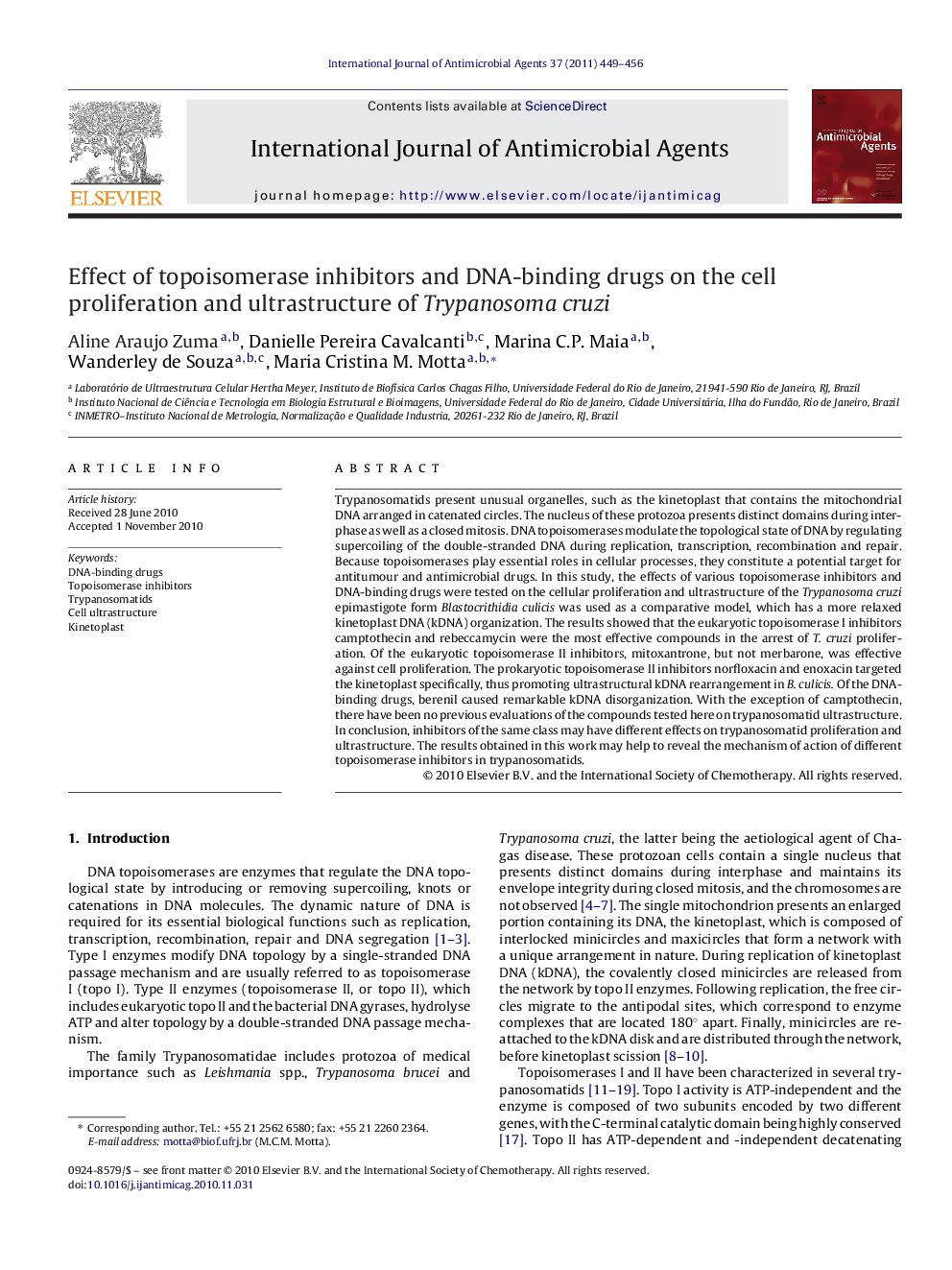| Article ID | Journal | Published Year | Pages | File Type |
|---|---|---|---|---|
| 6118422 | International Journal of Antimicrobial Agents | 2011 | 8 Pages |
Abstract
Trypanosomatids present unusual organelles, such as the kinetoplast that contains the mitochondrial DNA arranged in catenated circles. The nucleus of these protozoa presents distinct domains during interphase as well as a closed mitosis. DNA topoisomerases modulate the topological state of DNA by regulating supercoiling of the double-stranded DNA during replication, transcription, recombination and repair. Because topoisomerases play essential roles in cellular processes, they constitute a potential target for antitumour and antimicrobial drugs. In this study, the effects of various topoisomerase inhibitors and DNA-binding drugs were tested on the cellular proliferation and ultrastructure of the Trypanosoma cruzi epimastigote form Blastocrithidia culicis was used as a comparative model, which has a more relaxed kinetoplast DNA (kDNA) organization. The results showed that the eukaryotic topoisomerase I inhibitors camptothecin and rebeccamycin were the most effective compounds in the arrest of T. cruzi proliferation. Of the eukaryotic topoisomerase II inhibitors, mitoxantrone, but not merbarone, was effective against cell proliferation. The prokaryotic topoisomerase II inhibitors norfloxacin and enoxacin targeted the kinetoplast specifically, thus promoting ultrastructural kDNA rearrangement in B. culicis. Of the DNA-binding drugs, berenil caused remarkable kDNA disorganization. With the exception of camptothecin, there have been no previous evaluations of the compounds tested here on trypanosomatid ultrastructure. In conclusion, inhibitors of the same class may have different effects on trypanosomatid proliferation and ultrastructure. The results obtained in this work may help to reveal the mechanism of action of different topoisomerase inhibitors in trypanosomatids.
Related Topics
Life Sciences
Immunology and Microbiology
Applied Microbiology and Biotechnology
Authors
Aline Araujo Zuma, Danielle Pereira Cavalcanti, Marina C.P. Maia, Wanderley de Souza, Maria Cristina M. Motta,
